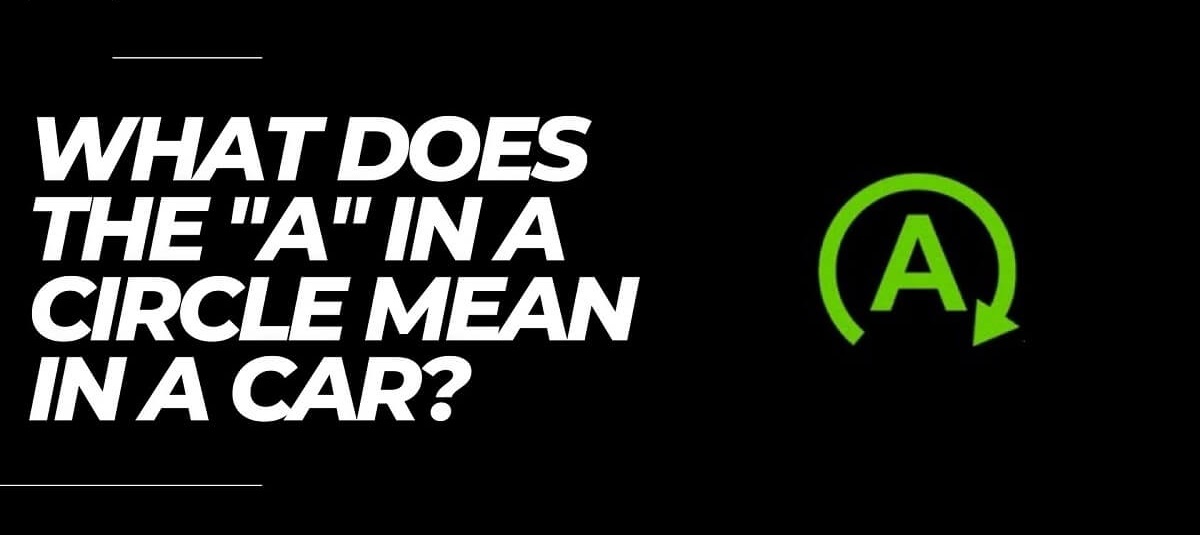What Does O/d Mean In A Car

As an experienced DIYer, you're likely familiar with the intricacies of your car's mechanical systems. Understanding the transmission is crucial for maintenance, troubleshooting, and even performance modifications. One feature often encountered, and sometimes misunderstood, is the O/D switch, or Overdrive. Let's delve into what O/D means in a car, how it works, and how it impacts your driving experience.
Purpose of Understanding Overdrive
Understanding overdrive goes beyond simply knowing what the O/D button does. It equips you with the knowledge to:
- Diagnose transmission problems: Irregular overdrive behavior can signal underlying issues.
- Improve fuel efficiency: Using overdrive correctly can significantly reduce fuel consumption.
- Optimize performance: Knowing when to engage or disengage overdrive can improve acceleration and towing capability.
- Perform basic troubleshooting: You can often isolate problems by observing overdrive functionality.
- Make informed decisions about transmission modifications: Understanding gear ratios and overdrive allows for better-informed upgrade choices.
Key Specs and Main Parts
Overdrive, in essence, is an extra gear in your automatic transmission (or sometimes a manually selectable option in manual transmissions). It's characterized by a gear ratio lower than 1:1. This means the output shaft of the transmission spins faster than the input shaft.
Key Components Related to Overdrive:
- Overdrive Clutch Pack: A series of friction and steel plates within the transmission that engage or disengage the overdrive gear.
- Overdrive Solenoid: An electrically controlled valve that directs hydraulic fluid to engage or disengage the overdrive clutch pack.
- Transmission Control Module (TCM): The computer that controls the transmission, including overdrive engagement, based on factors like vehicle speed, engine load, and throttle position. In some older vehicles, this function may be integrated into the Engine Control Unit (ECU).
- O/D Switch: A physical button (often located on the gear selector lever) that allows the driver to manually disable overdrive.
- Hydraulic Pump: Supplies the necessary hydraulic pressure to operate the overdrive clutch pack.
- Planetary Gearset: The gear arrangement that creates the overdrive ratio.
Typical Gear Ratios: While specific ratios vary, a typical overdrive ratio might be around 0.7:1 or 0.8:1.
How It Works
The overdrive function works by altering the gear ratio between the engine and the wheels. When engaged, the output shaft rotates faster than the input shaft, reducing engine RPM at a given vehicle speed. This reduction in engine RPM translates to several benefits:
- Improved Fuel Economy: Lower engine RPM means less fuel is burned.
- Reduced Engine Wear: Lower engine speeds reduce stress and wear on engine components.
- Quieter Operation: Lower RPMs result in a quieter driving experience, especially at highway speeds.
The TCM constantly monitors various sensors, including vehicle speed, engine speed (RPM), throttle position, and engine load. When the conditions are right (typically above a certain speed and under light to moderate load), the TCM activates the overdrive solenoid. The solenoid directs hydraulic fluid to the overdrive clutch pack, engaging the overdrive gear. When the driver presses the O/D button, they are essentially telling the TCM to not engage overdrive, regardless of the other sensor inputs.
When overdrive is *disabled*, the transmission will shift through all the other gears as normal, but it will not shift into overdrive. This means the engine will run at a higher RPM for any given speed, thus using more fuel.
Real-World Use and Basic Troubleshooting
When to Use Overdrive:
- Highway Cruising: Overdrive is ideal for maintaining speed on flat, open highways.
- Light to Moderate Load: Use overdrive when not towing heavy loads or driving uphill.
When to Disable Overdrive:
- Towing: Disabling overdrive prevents the transmission from constantly shifting between overdrive and the lower gear, which can generate excessive heat and wear.
- Hilly Terrain: Disable overdrive to maintain power and prevent "hunting" between gears on steep inclines.
- City Driving (Stop-and-Go): In heavy traffic, disabling overdrive can provide better acceleration and responsiveness.
Troubleshooting Tips:
- Overdrive Light Flashing: This typically indicates a transmission problem. Have the vehicle scanned for diagnostic trouble codes (DTCs). Common causes include a faulty solenoid, a worn clutch pack, or low transmission fluid.
- Transmission Not Shifting into Overdrive: First, check the O/D button to ensure it's not accidentally disabled. If the light is off and the transmission still won't shift into overdrive, it could be due to a faulty solenoid, TCM, or internal transmission damage. A scan tool can help pinpoint the problem.
- Rough Shifting into Overdrive: This could be caused by low transmission fluid, a worn clutch pack, or a malfunctioning solenoid.
Safety Considerations
The transmission is a complex system with high-pressure hydraulic circuits and rotating components. Some key safety precautions include:
- Hot Transmission Fluid: Always allow the engine and transmission to cool down before working on the transmission. Transmission fluid can be extremely hot and cause severe burns.
- High Hydraulic Pressure: Never disconnect hydraulic lines while the engine is running. The pressure can be high enough to cause injury.
- Supporting the Vehicle: When working underneath the vehicle, always use jack stands to support the weight. Never rely solely on a jack.
- Eye Protection: Wear safety glasses to protect your eyes from debris and fluids.
- Cleanliness: Maintain a clean work area to prevent contamination of the transmission components.
Important Note: Transmission work can be complex and requires specialized tools and knowledge. If you are not comfortable performing the work yourself, it is best to consult a qualified mechanic.
We have access to detailed wiring diagrams for many vehicles, including the transmission control system and the overdrive circuit. This diagram includes information on sensor locations, wiring colors, connector pinouts, and component locations. Having this diagram can greatly assist in troubleshooting electrical problems related to overdrive.
Understanding the O/D function can help you improve fuel economy, prevent transmission damage, and diagnose problems, making you a more informed and capable car owner.
